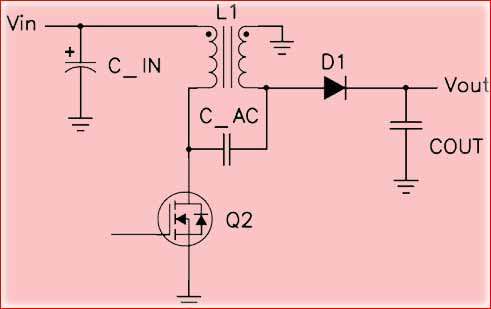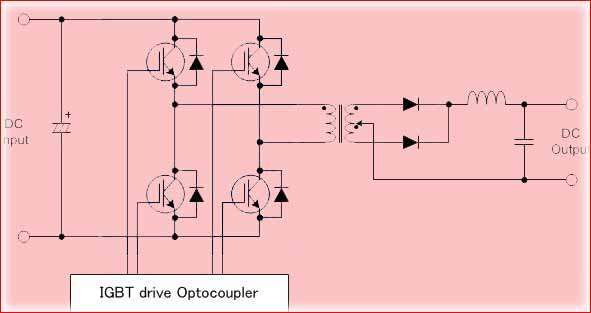DC to DC Converter Types: Important Concepts
DC to DC converter types are used in power electronics to efficiently convert one DC voltage level to another. They find applications in various fields, such as power supplies, renewable energy systems, electric vehicles, and portable electronic devices.
Read More About
DC to DC Converter Types
Buck Converter
The Buck converter, also known as a step-down converter, is a widely used among DC to DC converter types. Its primary purpose is to lower the input voltage to a lower output voltage level. The key component in this converter is an inductor.

The output voltage is given by the formula:
Output Voltage = Input Voltage * D
Where “D” is the duty cycle of the switching waveform. Buck converters are highly efficient and suitable for applications where the output voltage needs to be lower than the input voltage.
Boost Converter:
A Boost converter, or step-up converter, is designed to increase the input voltage to a higher output voltage level. It utilizes an inductor and a diode to achieve this conversion.

The output voltage is given by:
Output Voltage = Input Voltage x (1 / (1 – D))
Here, “D” represents the duty cycle of the switching waveform. Boost converters are commonly used in battery-operated devices and solar power systems.
Buck-Boost Converter:
The Buck-Boost converter can step up or step down the input voltage depending on the duty cycle. These are versatile DC to DC converter types that can invert the output polarity when needed.

duty cycle
The duty cycle (D) of a switching converter, such as a buck-boost converter, is the ratio of the time the switch (transistor) is ON to the total switching period. It’s a key parameter that determines how much energy is transferred from the input to the output.
The duty cycle is typically controlled to achieve the desired output voltage. The formula to calculate the duty cycle is:
Duty Cycle (D) = Ton / Ttotal
Where:
- Ton is the time the switch is ON during a switching period.
- Ttotal is the total duration of one switching period.
The duty cycle is expressed as a decimal value or percentage.
In a buck converter (step-down mode), the duty cycle is typically calculated based on the desired output voltage and the input voltage:
Duty Cycle (Buck) = Vout / Vin
In a boost converter (step-up mode), the duty cycle is calculated in relation to the output and input voltages:
Duty Cycle (Boost) = 1 – Vin / Vout
For a buck-boost converter, the duty cycle depends on whether the converter is operating in buck (step-down) or boost (step-up) mode. The control loop of the converter adjusts the duty cycle to maintain the desired output voltage by using feedback mechanisms to regulate the output.
Cuk Converter:
The Cuk converter is among DC to DC converter types that provides both step-up and step-down voltage conversion. It is known for its ability to provide a non-inverted output voltage compared to the input voltage.

Here are the formulas for calculating some important parameters in a Cuk converter:
Duty Cycle (D): The duty cycle in a Cuk converter is the ratio of the time the switch (transistor) is ON to the total switching period. It is used to control the energy transfer between the input and output. The formula for calculating the duty cycle is similar to that of other converters:
Duty Cycle (D) = Ton / Ttotal
Where Ton is the time the switch is ON, and Ttotal is the total switching period.
Output Voltage (Vout): The output voltage of a Cuk converter is determined by the input voltage (Vin), duty cycle (D), and the voltage conversion ratio:
Output Voltage (Vout) = Vin x (1 / (1 – D))
Sepic Converter:
The SEPIC (Single-Ended Primary Inductor Converter) is a type of DC-DC converter that provides both step-up and step-down voltage conversion capabilities. It’s especially useful for applications where the input voltage can be either higher or lower than the desired output voltage.

Here are the basic formulas for the SEPIC converter:
Output Voltage in SEPIC Converter:
For the SEPIC converter, the output voltage (Vout) can be calculated based on the duty cycle (D), input voltage (Vin), and the turns ratio of the inductor windings (M):
Output Voltage (Vout) = Vin x (1 + D) x M
Where:
- Vin is the input voltage.
- D is the duty cycle (ratio of on-time to total switching period).
- M is the turns ratio of the inductor windings.
Duty Cycle in SEPIC Converter:
The duty cycle (D) of the SEPIC converter can be calculated based on the desired output voltage (Vout), input voltage (Vin), and the turns ratio (M):
Duty Cycle (D) = (Vout / (Vin x M)) – 1
Where:
- Vin is the input voltage.
- Vout is the desired output voltage.
- M is the turns ratio of the inductor windings.
Forward Converter:
The Forward converters are another isolated DC to DC converter types that uses a transformer to transfer energy. It is commonly found in high-power applications.

The output voltage of a forward converter, a type of isolated DC-DC converter, depends on various factors including the duty cycle, turns ratio, input voltage, and the transformer’s characteristics. The forward converter is commonly used in power supplies and voltage regulation applications. Here’s a general formula to calculate the output voltage of a forward converter:
Output Voltage (Vout) = Vin x (D x Ns / Np)
Where:
- Vin is the input voltage.
- D is the duty cycle (ratio of on-time to total switching period).
- Ns is the number of turns on the secondary side of the transformer.
- Np is the number of turns on the primary side of the transformer.
Forward converters are known for their simplicity and high efficiency.
Push-Pull Converter:
The Push-Pull converter is a dual-switching converter that uses a center-tapped transformer to provide isolation. It is capable of handling higher power levels.

The output voltage of a push-pull converter, a type of isolated DC-DC converter, can be determined based on the input voltage, duty cycle, and transformer turns ratio. The push-pull converter is commonly used in power supply and voltage regulation applications. Here’s a simplified formula to calculate the output voltage of a push-pull converter:
Output Voltage (Vout) = Vin x (D x Ns / Np)
Where:
- Vin is the input voltage.
- D is the duty cycle (ratio of on-time to total switching period).
- Ns is the number of turns on the secondary side of the transformer.
- Np is the number of turns on the primary side of the transformer.
Push-Pull converters are commonly used in high-frequency power supplies.
Full-Bridge Converter:
The Full-Bridge converter are isolated DC to DC converter types that use four switches to provide voltage transformation. It is suitable for high-power applications.

The output voltage of a full-bridge converter, a type of isolated DC-DC converter, can be calculated based on the input voltage, duty cycle, transformer turns ratio, and bridge topology. The full-bridge converter is widely used in various power supply and voltage regulation applications. Here’s a simplified formula to calculate the output voltage of a full-bridge converter:
Output Voltage (Vout) = Vin x (D x Ns / Np)
Where:
- Vin is the input voltage.
- D is the duty cycle (ratio of on-time to total switching period).
- Ns is the number of turns on the secondary side of the transformer.
- Np is the number of turns on the primary side of the transformer.
Half-Bridge Converter:
The Half-Bridge converter is a variation of the Full-Bridge converter, using two switches instead of four. It is commonly used in high-power applications like motor drives and inverters.

The output voltage of a half-bridge converter, a type of isolated DC-DC converter, can be determined based on the input voltage, duty cycle, and transformer turns ratio. The half-bridge converter is commonly used in power supply and voltage regulation applications. Here’s a simplified formula to calculate the output voltage of a half-bridge converter:
Output Voltage (Vout) = Vin x (D x Ns / Np)
Where:
- Vin is the input voltage.
- D is the duty cycle (ratio of on-time to total switching period).
- Ns is the number of turns on the secondary side of the transformer.
- Np is the number of turns on the primary side of the transformer.
In conclusion, DC to DC converter types play a crucial role in power electronics by efficiently transforming DC voltages. Each type of converter has its advantages and disadvantages, making them suitable for specific applications. Understanding the characteristics of these converters helps engineers choose the right one for their intended use, optimizing power efficiency and performance.
Follow Us on Social:
Subscribe our Newsletter on Electrical Insights to get the latest updates in Electrical Engineering.
DCtoDCConverter, #PowerConversion, #DCConverters, #VoltageRegulation, #EnergyEfficiency, #PowerElectronics, #DCtoDC, #StepUpConverter, #StepDownConverter, #BoostConverter, #BuckConverter, #PowerManagement, #RenewableEnergy, #ElectricVehicles, #BatteryManagement
